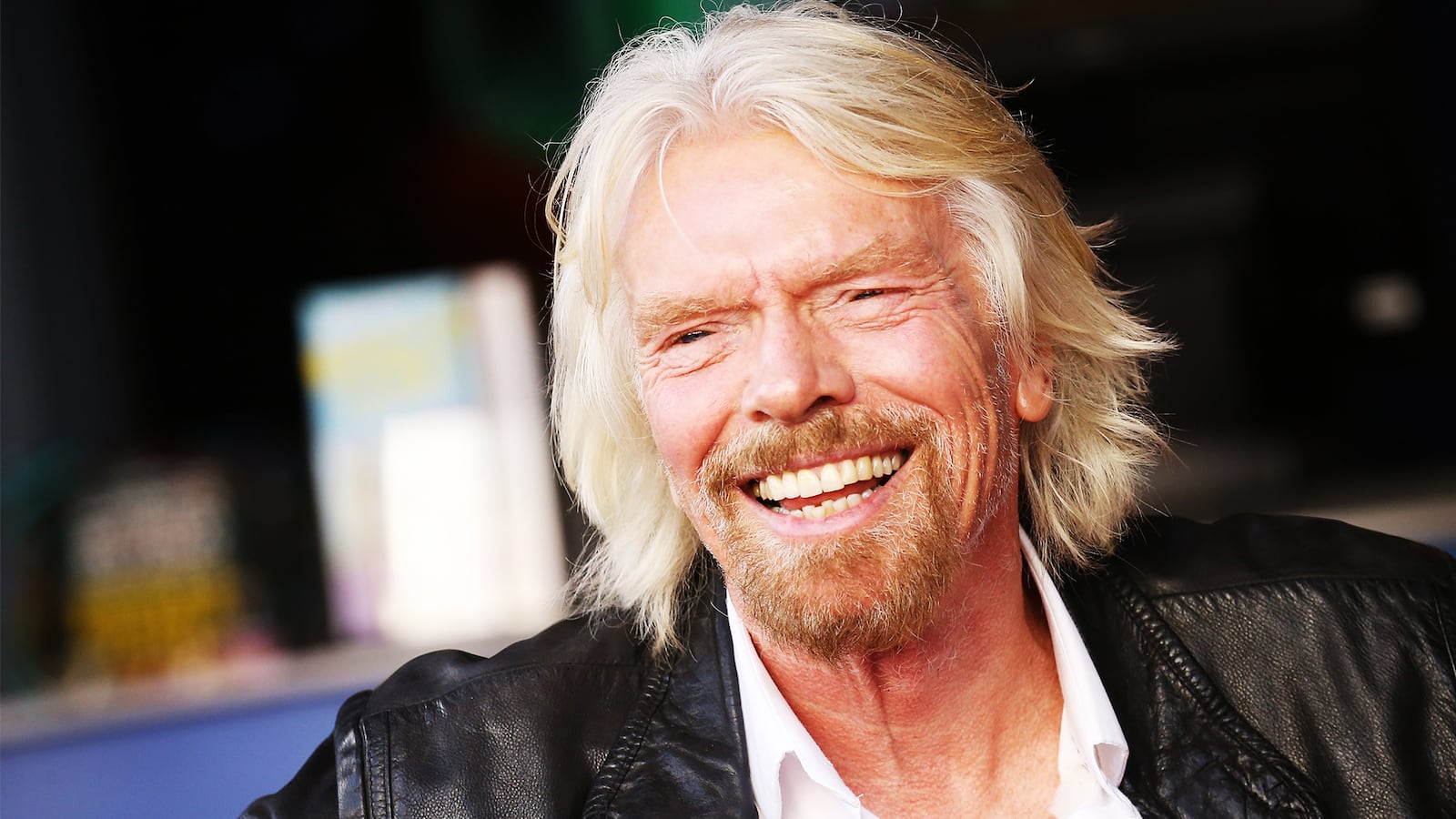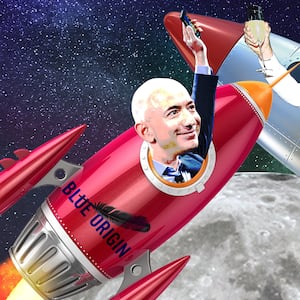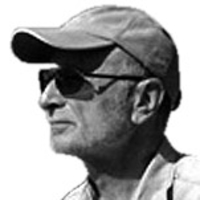Richard Branson is finally close to riding his rocket ship.
After a decade in which he repeatedly announced his imminent departure into space as the first passenger aboard Virgin Galactic’s SpaceShipTwo, only to then call it off, it seems that the ship is ready.
And Branson, ever the showman, aims to time his ride to coincide with the most epochal date in the history of space travel. Earlier this year he announced his intention to lift off on or close to July 20, the 50th anniversary of Apollo 11’s landing on the moon.
That would certainly be an act of chutzpah. The Apollo program went from conception to the moon landing in eight years. Branson originally promised his ship would be ready for lift-off with passengers in 2009, and we’re still waiting.
Technically, Virgin Galactic is no moonshot. It is a project of far lower ambition and aimed at a fundamentally frivolous purpose. For years it has been way overhyped.
In April 2013 I, along with other reporters who followed the Galactic saga wrote, “The dawn of space tourism may be only days away…”
It wasn’t, and the whole thing began to feel like one long tease propelled more by hope than rocket fuel.
But in the last nine months Galactic has looked a lot more credible. On December 13 the latest version of SpaceShipTwo, named Unity, finally broke through the threshold height at which NASA and U.S. Air Force pilots can claim their astronaut wings, 264,000 feet or nearly 62 miles.
Unity reached an apogee of 271,684 feet.
Then, on February 22, on its fifth rocket-powered test flight, Unity reached nearly 300,000 feet and a top speed of Mach 3.04—more than three times the speed of sound. That was also the first time the rocket engine had run for its full burn.
Even more significant as an indicator of Branson’s intentions, the next flights by Unity will not be from Galactic’s test base in Mojave, California, but from the grandly-named Spaceport America 45 miles north of Los Cruces in New Mexico—a project that has cost the state’s taxpayers many millions since 2011 as it awaited Galactic’s repeatedly postponed arrival.
If Branson does lift off next month he won’t technically be Unity’s first passenger. The February test flight, in addition to the two pilots, for the first time carried a third person in the passenger cabin, and her part in the program’s progress is crucial to persuading paying passengers that Unity is safe to ride.
She is Beth Moses, who moved to Galactic from NASA where she was a systems manager for the International Space Station overseeing space walks and had personally researched the effects of zero gravity during more than 400 parabolic flights on airplanes in which weightlessness was achieved for a short time.
At Galactic Moses is chief astronaut instructor. But on the February flight she was more concerned with the effects on passengers.
In an interview with Aviation Week Moses said that for a short time she felt “squished into my seat” when, during the reentry into the Earth’s atmosphere the gravitational forces peaked at 4g.
She said she was weightless for several minutes and twice left her seat to float as part of working out how Galactic would have to train those future passengers who will pay $250,000 for the sensation of weightlessness and a view of Earth that she said had been breathtaking.
The visceral and visual thrills are the core of what “space tourism” is selling. And Branson is no longer alone in selling them: with a contrasting stealth and scientific discipline Jeff Bezos is taking a very different flight path to suborbital joy rides. His Blue Origin rocket ship has already exceeded Unity’s apogee by reaching 346,000 feet during an unmanned flight from a remote base in Texas.
Blue Origin’s rocket ship, named New Shepard after Alan Shepard, the first American to reach space, is a notably simpler system than Galactic’s. This is a crucial difference that points to a generational difference in the two technologies.
New Shepard is basically ballistic: six passengers ride in a capsule atop a powerful rocket, the capsule detaches at the apogee and descends back through space and once in the atmosphere returns to Earth on parachutes.
Galactic combines ballistic—a rocket-powered ascent—with aerodynamics, using a unique device that acts to tilt the ship like a shuttlecock for the first stage of the descent and then glide back to the landing strip. Also, unlike Blue Shepard, which has a conventional launch from a ground pad, the Galactic ship is drop-launched at 44,000 feet from a mother ship, WhiteKnight Two and, once clear, fires up for a ballistic ascent.
Galactic’s system, conceived by the maverick designer Burt Rutan, seemed logical and smart when it was revealed in 2005.
By launching at altitude where there was far less gravitational force to overcome a much smaller rocket could be used—and the space vehicle could be repeatedly used whereas an expensive booster rocket used for a ground launch would end up as junk after each flight.
But now that calculus has changed. Both Bezos and Elon Musk have been able to bring their booster rockets back to Earth so that they can be re-used. New Shepard’s rockets have so far been used at least five times. That isn’t the same as a vehicle capable of multiple flights but it has made the ballistic model much more competitive.
The greater simplicity of New Shepard also means that there are far fewer encounters with untried systems than there are in the Rutan model.
A fundamental problem with the Galactic model from the start was that SpaceShipTwo was the size of a small business jet and that the rocket power available wasn’t enough to get it to apogee—until recently no test flight had reached more than one fifth of the target altitude.
The fact that the February test was the first where the rocket engine ran for its full planned duration reflected years of problems with the formula for the rocket fuel that finally seem to have been resolved. But SpaceShipTwo remains essentially an experiment with risks attached.
A crash of the first ship in October 2014, killing one of the two pilots, exposed safety shortcomings and a rift between the National Transportation Safety Board, which investigated the disaster, and the Federal Aviation Administration, which has oversight of flight testing.
The FAA was shown to have been as permissive with Galactic as it has been with Boeing during the certification of the 737 MAX-8. The difference here, though, is that this is not an airplane with a long history. There is no accumulated body of knowledge to produce and enforce safety guidelines. The FAA is learning along with Galactic where the risks are.
The 2014 crash was caused by human error. The copilot activated an aerodynamic brake too soon and the vehicle was torn apart. There was no failsafe mechanism to override the pilot’s actions. Unity, the replacement, has that precaution and other changes to the safety regime.
For test flights safety issues are addressed by the FAA’s “Recommended Practices.” These include the ability “to abort, escape or both.” But the basic design of SpaceShipTwo allows no ejection system for either pilots or passengers. New Shepard’s capsule can eject from the top of the launch rocket if there is a problem at lift off or later, using the same principle pioneered by the Apollo program where the capsule is powered clear of the rocket and then descends safely by parachute.
The last two Unity flights have, according to Galactic, proved that one of the greatest remaining challenges has been met. There is no precedent for a vehicle that has to be controlled in two distinct environments, space where aerodynamic control surfaces are useless, and at the lower altitudes, where they take over for the remainder of the flight.
Maneuvers in space are made by using short bursts of jets of gas and Galactic reported that control “was as good or better than predicted.”
Nonetheless Galactic admits that it is still at the heart of a test program, not yet close to being able to fly paying passengers from SpacePort America. But if Branson decides that his machine is now ready for him to take a seat in the cabin he will at least be the first of the contending tycoons to reach the edge of space.
However, the reality is that these brief suborbital adventures are a minor sideshow to the next wave of space travel in which the innovations are being driven by Musk and Bezos.
They have introduced their own idiosyncratic business acumen to what was once part of the military-industrial complex and shaken things up. They are doing this with a novel blend of commercial purpose and fanciful visions of an extra-terrestrial future for mankind that reaches to the colonization of Mars.
The moon landing was the exquisite conclusion of an unparalleled effort by a government-funded monopoly and the last of its kind. It accelerated technology on a broad front that spread its benefits widely, helping to lead us into the digital nirvana we now enjoy as though a birthright.
In the wide-eyed euphoria of 1969 it was impossible to imagine space travel as a luxury consumer product or a level of affluence where $250,000 would be willingly paid to brush the threshold of space and be weightless for a few minutes. Now NASA is offering trips to the International Space Station from 2025 aboard Musk’s Space-X Dragon capsule at a price of $52 million per ride and a nightly lodging charge of $35,000. That is surely not one small step by man and certainly not a giant leap for mankind.


